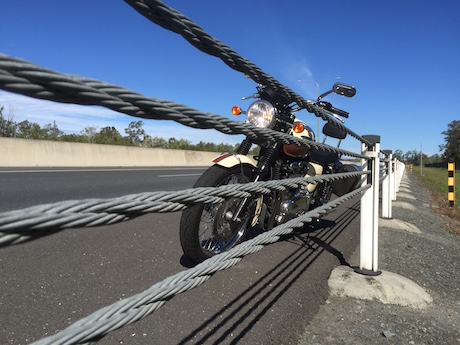As some jurisdictions are now replacing dangerous wire rope barriers, Victoria is forging ahead with 190km of the flexible barriers on the Goulburn Valley Highway.
Western Australia became the first Australian state to remove some of its wire rope barriers after a fatal involving a motorcyclist in a Christmas Toy Run in 2019.
It follows moves in Norway and Ireland to reverse their policy on WRBs which have long been viewed as dangerous to motorcyclists.
VicRoads says they are installing over 190km of the barriers on the Goulburn Valley Highway between the Hume Freeway and Ross Road, south of Kialla.
They claim:
Road safety infrastructure plays a vital role in preventing serious crashes. It also helps to reduce the severity of crashes when they’re unavoidable.
When a vehicle hits a flexible safety barrier, the posts bend at the base and the ropes catch the vehicle like a net. This helps to absorb the impact and shield the vehicle from hitting oncoming traffic, or into roadside hazards such as trees.
Early evidence shows that on the first 20 roads in Victoria treated with flexible safety barriers the total number of deaths and serious injuries caused by head-on and run-off-road crashes dropped by two thirds– from 120 people in 2015 to 41 people in 2019.
However, the evidence is not conclusive and has been debunked in several other studies.
Motorcycle Riders Association of Australia spokesman Damien Codognotto says the trend away from WRBs is damning for authorities that continue to roll out the dangerous barriers.
Damien has said that if road authorities and relevant ministers were not aware of the safety shortcomings of WRBs, “they should not be in their taxpayer-funded jobs”.
Apart from being considered dangerous by motorcycle riders, wire rope barriers are also unfair and discriminate against motorcycle and scooters riders, according to an Australian university road safety professor.
The professor, who wished to remain anonymous, pointed out that WRBs are officially acknowledged as posing more danger to riders and therefore discriminate against them.
His comments have been endorsed by Victorian Motorcycle Council chair Peter Baulch whose state is one of the most prolific in its use of WRBs.



